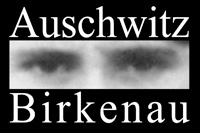




Escapes
In total, in the entire history of the Auschwitz camp, for over a million deportees, there were several hundred prisoners who attempted to escape. Spontaneous escapes usually ended in the death of the escapee who, trying to escape from the workplace, was shot by the guards. Escapes prepared in advance were more likely to succeed. It became possible when the so-called large-cordon guard system was introduced. This line of guard posts surrounded a broad area around the camp where prisoners worked and were watched by SS patrols. Would‑be escapees tried to pick out a hiding place ahead of time. When a prisoner was reported missing, the Germans sent out patrols to search the area, which remained under surveillance day and night by the SS men posted along the large cordon. If this did not yield results, the guard posts were called in after three days and telegrams sent to nearby police stations containing information about the fugitive. Another method used by escapees was to obtain civilian clothing and passes in order to mix in with the crowd of civilian workers leaving the camp in the evening. Several prisoners escaped disguised in SS uniforms. Others tunneled under the fences in sub‑camps, where the guard system was not so highly developed.
There were three mass escapes from Auschwitz— prisoners from the penal company (June 1942), Soviet prisoners of war (November 1942) and Sonderkommando prisoners (October 1944). There were also several desperate attempts by groups of Jews deported for extermination to conceal themselves or escape (for instance in February 1943) right after arriving with the transport at the ramp.
The majority of fugitives were caught by police patrols or shot while being pursued. At least 180 people managed to escape.
